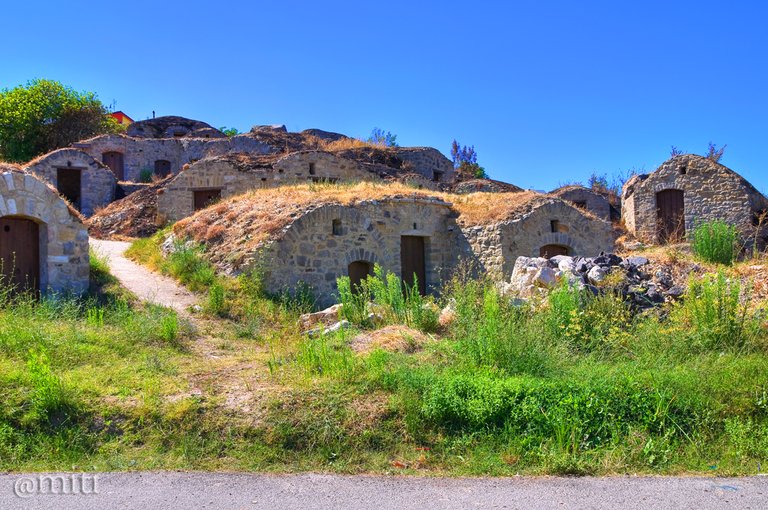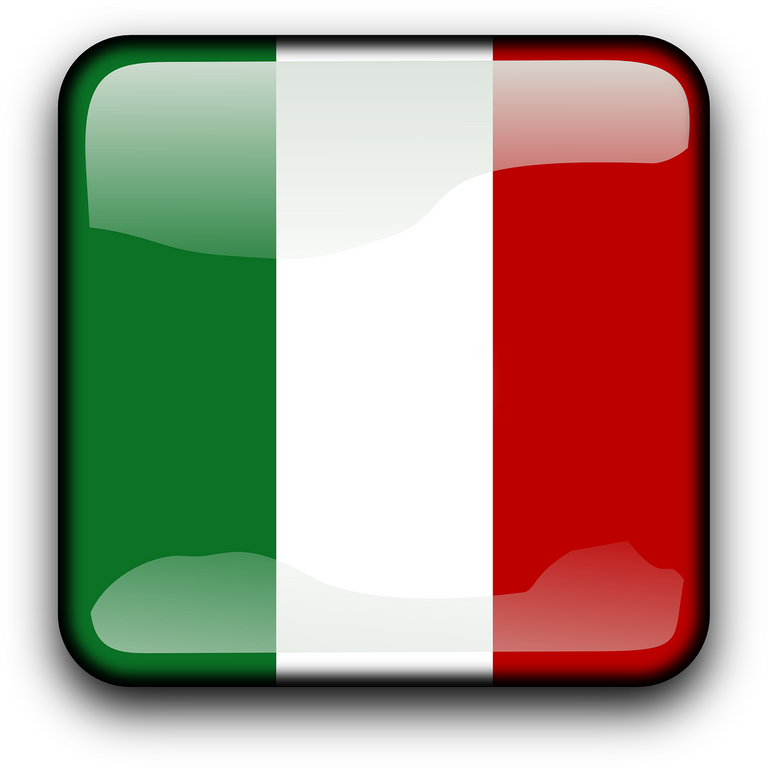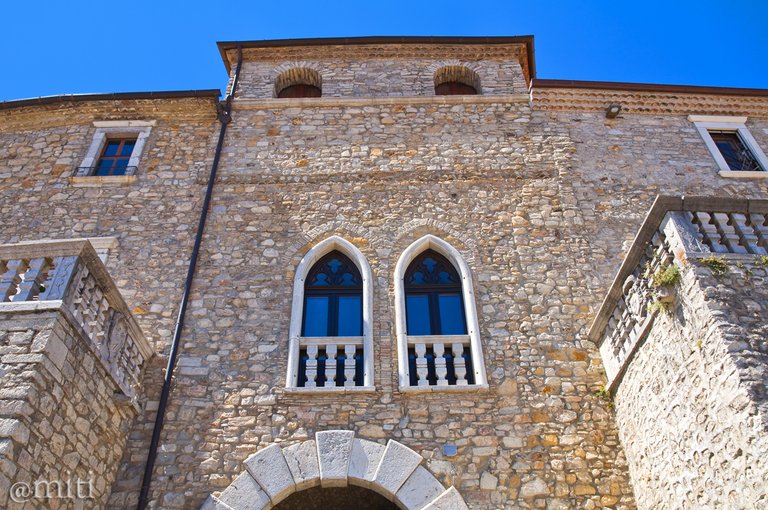
The wineries - Palmenti (Author's photo - All rights reserved)
I Palmenti (Immagine dell'autore - tutti i diritti sono riservati)



Ciao a tutti,
questo è un viaggio attraverso l'Italia. Posterò una foto al giorno con una brevissima descrizione. Spero vi piaccia!

Pietragalla è un borgo della provincia di Potenza, nella regione italiana meridionale della Basilicata. Si trova nell'Alto Bradano ed è circondato da tre colline: la Terra, San Michele e la Serra.
Il suo nome sembra derivare da Pietro Cancellario, un condottiero (leader mercenario) noto come il "Gallo", ma un'altra ipotesi suggerisce invece che il suo nome derivi dal giallo tuface sul suo territorio. È più probabile che esso derivi dalla parola medievale "gualdus", che significa bosco.
Le origini dell'attuale villaggio sono risalenti al X secolo circa, ma il territorio era già attivo come base indigena durante l'età del ferro, come dimostrano i ritrovamenti sul monte Torretta.
Vicino al villaggio, ci sono i resti di un insediamento costruito prima dell'XI secolo a.C. e che durò fino al III secolo a.C.
Le principali strutture architettoniche di Pietragalla e che meritano una visita sono il Palazzo Ducale degli Acquaviva d'Aragona, la Chiesa di San Nicola, risalente al XVI secolo, ricostruita in stile barocco nel XVIII secolo e attualmente chiusa a seguito del terremoto del 1980 .
I resti del castello medievale nella località di Casalaspro testimoniano l'enorme danno causato dal terremoto del 1456.
Merita sicuramente una visita il Monte Torretta. Qui sono emerse testimonianze riguardanti l'antico centro lucano: un tempio, mura e acropoli. I migliori reperti sono oggi esposti nel Museo archeologico provinciale di Potenza.
Le grotte scavate nel tufo e utilizzate per la maturazione del vino, chiamate "Palmenti", sono caratteristiche di questa zona. Gironzolare tra i palmenti è un po’ come andarsene a spasso in un labirinto. Pietragalla è famosa per questi ipogei e solo qui se ne contano circa 200. La porta di alcuni è aperta, così da poter vedere come sono fatti all'interno. Sono interamente scavati nella roccia e composti da serbatoi adiacenti organizzati su diversi livelli. Questo sistema faceva sì che nella vasca più in alto venisse pigiata l’uva a piedi nudi e che il mosto cadesse nella vasca sottostante.
Da vedere: Il centro storico, il Palazzo Ducale degli Acquaviva d'Aragona, i resti del castello medievale, i Palmenti, la chiesa di San Nicola; la chiesa di Sant'Antonio; la chiesa di San Cataldo; l'area archeologica di Monte Torretta.

Hello everyone,
I began a Photo Journey through Italy. I will post one photo every day with a little note of explanation. I hope you like it!

Pietragalla is town in the province of Potenza, in the Southern Italian region of Basilicata. It is located in Alto Bradano and It is surrounded by three hills, namely La Terra, San Michele and La Serra.
Its name seems to be derived from Pietro Cancellario, a Condottiere (mercenary leader) known as the “Gallo”, but another hypothesis suggests instead that it was named after the yellow tuff stones on its territory. It is more likely that its names derives from the Medieval word gualdus, meaning woods.
The origins of the present day village is connected to around the X century, but the territory was already an active indigenous centre during the Iron Age, as demonstrated by finds on Mount Torretta.
Near the village, there are the remains of a settlement built before the XI century B.C. and lived in until the III century B.C.
The main architectonic structures in Pietragalla are The Ducal Palace of the Acquaviva d’Aragona, the Church of San Nicola, dating back to the XVI century, rebuilt in Baroque style in the XVIII century and is now closed as a consequence of the earthquake of 1980.
The remains of the Medieval castle in the Casalaspro locality testify the huge wound that was caused by the earthquake of 1456.
A visit to Monte Torretta is also very interesting. Here testimonies have emerged regarding the ancient Lucano centre: a temple, walls and acropolises. The best finds are today exhibited in the Provincial Archaeological Museum of Potenza.
Caves hollowed in the tuff and used for maturing wine they called "Palmenti" are characteristic of this area. Hanging around the "Palmenti" is a bit like going around in a little maze. Pietragalla is well known for these hypogeums and just here there are about 200 of them.
The door of some of them is open, so you can see how they are inside. It's entirely dug in the rock and made up of adjoining tanks organized on different levels.
This system ensure that in the upper tank grapes were pressed with naked feet and the must fell in the tank underneath.
Thing to see: The historical center, The Ducal Palace of the Acquaviva d’Aragona, the remains of the Medieval castle, the Palmenti, the San Nicola Church; the Sant’Antonio Church; the San Cataldo Church; the Archaeological area of Monte Torretta.

| Tipo di foto / Category | Paesaggio / Landscape view |
| Esposizione / Settings | 1/200 sec, ISO 200, f/10 |
| Camera | Nikon D5000 |
| Lente / Lens | Tamron SP 17-50mm f/2.8 XR Di II LD |
| Filtro / Filter | Polarizzatore Hoya / Hoya Polarizing filter |
| Cavalletto / Tripod | Manfrotto MKC3-P01 |
| Località / Location | Pietragalla (Potenza), Italia |
| Software | Photoshop / HDR |


The Ducal Palace of the Acquaviva d’Aragona (Author's photo - All rights reserved)
Il Palazzo Ducale degli Acquaviva d'Aragona (Immagine dell'autore - tutti i diritti sono riservati)
great photo, I learn a lot from your post thanks
Very beautiful pictures :D
Your comment is considered SPAM... Take a look in this guide:
https://steemit.com/steemit/@miti/a-complete-guide-for-newcomers-and-minnows-to-avoid-a-possible-spam-and-to-write-good-comments
It will help you.
Que nota.
Me encanto el artículo y su descripción por completo.
Las cuevas son una verdadera obra de arte e ingeniería. Me imagino la maduración del vino en ellas.
Aquí una fotografía aérea que me tome la libertad de buscar en google por lo impactado de ellas.
Saludos y Gracias amigo/aWaaaooooo @miti
You're welcome
Nice quality post and information increase my knowledge> :)
You're welcome ;-)
Wow it's a great log @miti
Thanks
Le decorazione a pietra così sono splendide e ricordano moltissimo paesaggi rurali che oggi, nelle grandi metropoli, si stanno perdendo.
Purtroppo è vero, il cemento prende il posto della pietra togliendo ogni fantasia e memoria storica.
un'altra perla!
si passa dalla preistoria al medio evo!
Ciao e grazie. Delle vere e proprie perle sconosciute ai più..
How beautiful the Palace. The hollowed-out caves are the wineries in photo 1? they look pretty. They look like houses to play.
Yes. It's an ingenious system to produce wine.
Genius, they carved their own wine containers out of the rock. Beautiful thank you.
Yes, that's right! ;-)
It's like a Hobbit town :-)
Yes, that's what it looks like :D
Have you ever thought about launching your own online business in the travel industry?
Interesting, but I already have a online business in the editing and post-production of photos and videos.
Very nice place. Thanks for the beautiful picture.
Your posts get me more and more excited for my upcoming trip.
I'm glad to hear that..
Ho fatto resteem sulla pagina ita-travel!
Ciao, @marcodobrovich
Uallllllll
Que lugar lindo, transmite paz ao olhar!
Parabéns pelo click
nice
Your comment is considered SPAM... Take a look in this guide:
https://steemit.com/steemit/@miti/a-complete-guide-for-newcomers-and-minnows-to-avoid-a-possible-spam-and-to-write-good-comments
It will help you.
Nice
Source
Generic comments could be mistaken for spam.
More information:
The Art of Commenting
Comment Classifications
Your comment is considered SPAM... Take a look in this guide:
https://steemit.com/steemit/@miti/a-complete-guide-for-newcomers-and-minnows-to-avoid-a-possible-spam-and-to-write-good-comments
It will help you.
nice pic
Your comment is considered SPAM... Take a look in this guide:
https://steemit.com/steemit/@miti/a-complete-guide-for-newcomers-and-minnows-to-avoid-a-possible-spam-and-to-write-good-comments
It will help you.